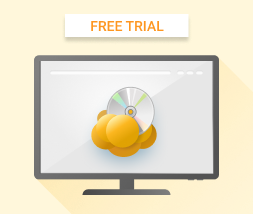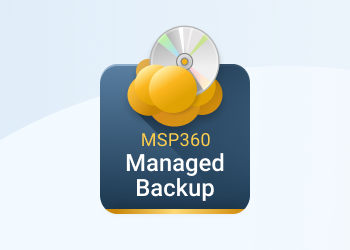When it comes to protecting your virtual environment, the main question that you face is which approach to choose. Depending on your virtual environment, MSP360 Backup offers two possible ways you can choose from: guest-level or host-level backup.
The guest-level approach is similar to a physical machine backup. It works at the VM-level with an MSP360 Backup agent installed on it. Host-level backup works at the hypervisor level. The backup software is installed on the host and allows backup of the entire VM, including virtual disks, checkpoints, and configuration files.
Guest-Level Backup Pros and Cons
With the guest-level approach, the MSP360 Backup agent protects that VM with an image-based backup. This type of backup allows you to create a copy of the entire operating system, applications, and individual files.
The pros of the guest-level approach:
- Backup of Windows-based VMs, even if the virtualization is not supported by MSP360 Backup, such as Nutanix AHV and Citrix Hypervisor;
- Different types of restore: from a virtual disk to a cloud computing service, such as AWS EC2 instance, Microsoft Azure VM;
- Item-level restore from the image-based backup;
- MS SQL Server and MS Exchange Server backup with appropriate backup plans. An appropriate license edition is needed, though;
- The only approach for backing up VMs with VMware ESXi Free version.
Disadvantages of guest-level backup:
- The backup application must be installed on each VM, and the image-based backup plan should be configured for each VM, which makes backup management more complicated;
- VM recovery from the image-based backup back to the host is not always a straightforward process. Currently, only for VMware, it is possible to restore the image-based backup as a VM directly to the ESXi host through the vSphere. The recovery of the image-based backup as a VM to the Hyper-V host has to be carried out by creating a virtual disk;
- Computing resources consumption is much higher, especially when several virtual machines on the same host are being backed up at once;
- Cannot be applied to Linux-based VMs. MSP360 Backup for Linux does not support image-based backup yet.
Host-Level Backup Pros and Cons
The host-level backup approach works at the hypervisor level and can back up VMs regardless of the operating system running in them. Virtual machines can be backed up completely, including the virtual disk files and configuration files in which the VM settings are stored.
The pros of host-level backup:
- It is easier to manage. There is no need to install the MSP360 Backup agent on each VM. You need to install it either directly on the host, in case of a Hyper-V environment, or on any server that belongs to the same network and has access to the VMware infrastructure. This allows you to protect the host and all the VMs you have access to. You can protect them all within one backup plan.
- The VM is backed up at the VM level with virtual disks, snapshots, and VM settings;
- It allows you to back up Linux-based VMs;
- The VM can be recovered directly to the host and started right after the recovery;
- Item-level restore from the VM;
- Less computing resources are needed.
Disadvantages of host-level backup:
- Not possible on the VMware ESXi Free version;
- Not supported for Nutanix AHV and Citrix Hypervisor;
- Not possible with KVM virtualization.
Conclusion
MPS360 Backup offers different approaches that cover almost every scenario for protecting your virtual environment. According to your business requirements and available infrastructure, you can choose either host-level or guest-level backup.
Both of them have their own strong and weak sides. Guest-level backup requires the agent-based approach with the backup software installed on each VM that you need to protect. However, in some cases, the host-level backup could be more suitable, due to virtual environment specifics.





